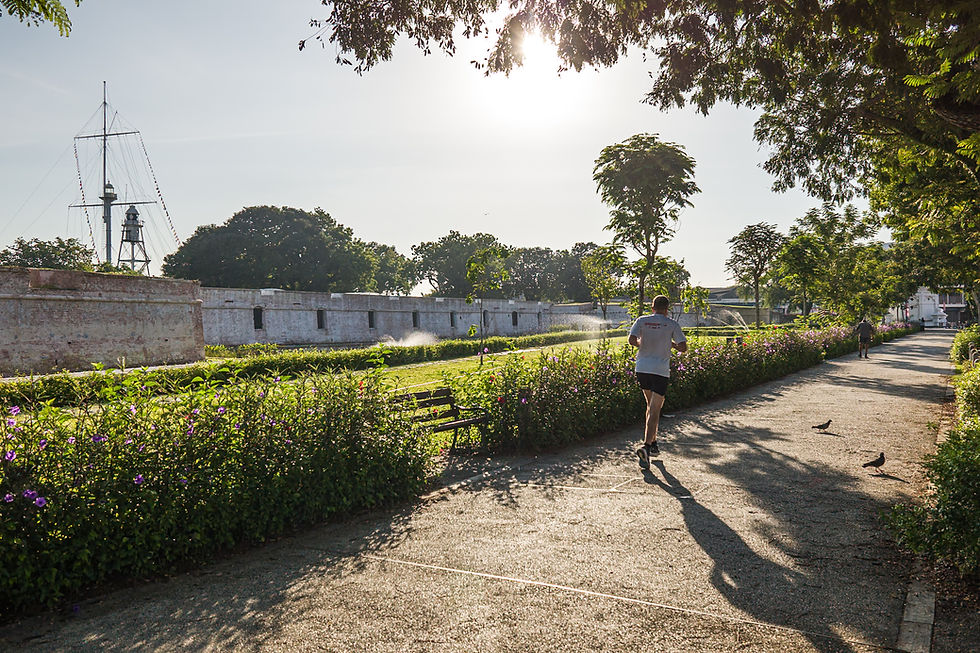Photoessay: White Wash Project 2
- yzhensiang

- 3 days ago
- 4 min read

In continuation of my ongoing documentary, the White Wash Project that was posted more than 6 months ago has seen some development with more prominent visual evidence of what's happening on site. In fact it has an observable growing trend across George Town’s UNESCO World Heritage Site. The gradual loss of colour from its historic streetscapes is frankly quite worrying. More shophouses, clan homes, and long-standing landmarks are now seen to be coated with white paints, stripping them from their original rich tones that once defined their identities.
While the intention may be to “refresh” or “modernise”, the effect raises deeper questions about authenticity, preservation, and the fragile balance between tourism-driven aesthetics and cultural heritage. As I continued documenting these incidents around, I began noticing a deeper pattern beneath the white paint. The loss of colour across George Town does not feel accidental. My suspicion is that the preference towards monotonous colours reflects a wider push toward industrialisation and standardisation, where efficiency takes priority over identity. When everything is made uniform, it becomes cheaper to maintain, easier to sell, and much more aligned with the common commercial interests. A fresh coat of white offers a quick, clean “output” that photographs well, attracts certain group of investors, and fits neatly into the curated narrative of a “revitalised” heritage city. Also behind the aesthetics lies economics: a few cents saved per litre of paint becomes millions when multiplied across redevelopment projects. Neutrality becomes profit.
As of current stage, these transformations are mostly visible in the main tourist zones where the heart of UNESCO World Heritage site is located. Where most of them are turned into boutique hotels and cafes now can be seen sitting beside buildings on the verge of collapse. What used to be lived-in structures are being reimagined—sometimes aggressively—as hospitality assets. In the rush to boost tourism after the pandemic, authorities and private developers appear to be converting heritage buildings into boutique accommodations at a pace that mirrors gentrification efforts elsewhere. White, in this context, becomes a tool: a surface-level modernisation that signals order, safety, and upscale value.
Walking through these streets now, I sometimes feel like we are living inside a dystopian colour palette—a reality where vibrancy has been stripped in favour of tones that appear trendy, the “grey” look. But truly, in my opinion all it does reflect is the lack emotional warmth. In a twisted way, it almost felt as if reducing colour helps to reduce the overall excitement level of the community living in it. Hence, easier to be "control". As a population that is less excited is usually more compliant, and more predictable.
Interestingly, my research for the project had also led me to the term "archaeological brown", a phenomenon where ancient pigments and natural dyes tend to fade into brown tones over time. While this concept originates in archaeology rather than architecture, the symbolism resonates. In both cases, bright colours disappear, replaced by something muted—either through natural aging or through deliberate decisions made in the present. It made me wonder: are we witnessing a modern, intentional version of that fading? A shift where cultural vibrancy is sanded down into a safer, quieter palette?
From my broad observation, this isn’t just happening in George Town. This behavior is consistent across different sectors as well. Our global culture seems to collectively be moving toward neutral and muted aesthetics. Modern homes and interiors have embraced gray because it is said to appeal to the “broadest market.” Car manufacturers too now largely produce white, black, and gray vehicles because these colours sell best. Fast-food chains, once drenched in bright reds and yellows, now present themselves in wood tones, smokey grey, and muted palettes to reflect an “upscale” maturity. Even CGI remakes of once-colourful classics are noticeably duller, perhaps to appear more “serious” or “sophisticated”. Christmas lights, once vibrant and chaotic, have shifted toward uniform white displays.
There seem to be a common theme across these examples, as we are now culturally trained to associate muted colours with wealth, refinement, modernity, and bright colours with being cheap, loud, or childish. This preference is learned like many learned behaviours, it spreads through design, marketing, and urban policies until it becomes the norm—accepted without question.
Today, there is still no consensus on why this shift has taken place. Even the idea of “millennial grey,” a trend that dominates modern interiors, comes with competing theories. Some believe it has broad appeal for real estate. Others argue it reflects a cultural fear of personal expression, or a desire for a minimalist, “clean” lifestyle. Yet the outcome is consistent: less colour, more sameness.
Which brings me back to George Town.
The White Wash Project isn’t only about buildings being painted white. It is about what we lose when cultural texture is replaced by standardisation. It is about how a heritage city—once defined by layers of colour, age, and lived history—is at risk of becoming a blank canvas for commercial narratives. And it raises a difficult question: when we remove the colours of a place, are we also removing its spirit?
Through these photographs, the essay aims to show the scale of the shift, the textures of loss, and the subtle erosion of character taking place behind the polished façade. Yet amidst this ongoing whitening of the city, there are still reminders of how thoughtful restoration can honour both history and authenticity. One such example is the Argus Residence at Lorong Argus, is where I consider the restoration to be tastefully done, preserved, and revived rather than erased. The colour choice reflects age, memory, and highlights traditional craftsmanship—showing that preservation does not require general uniformity. This single restoration stands as proof that George Town’s character can be protected without reducing it to a blank canvas.


.jpg)























Comments